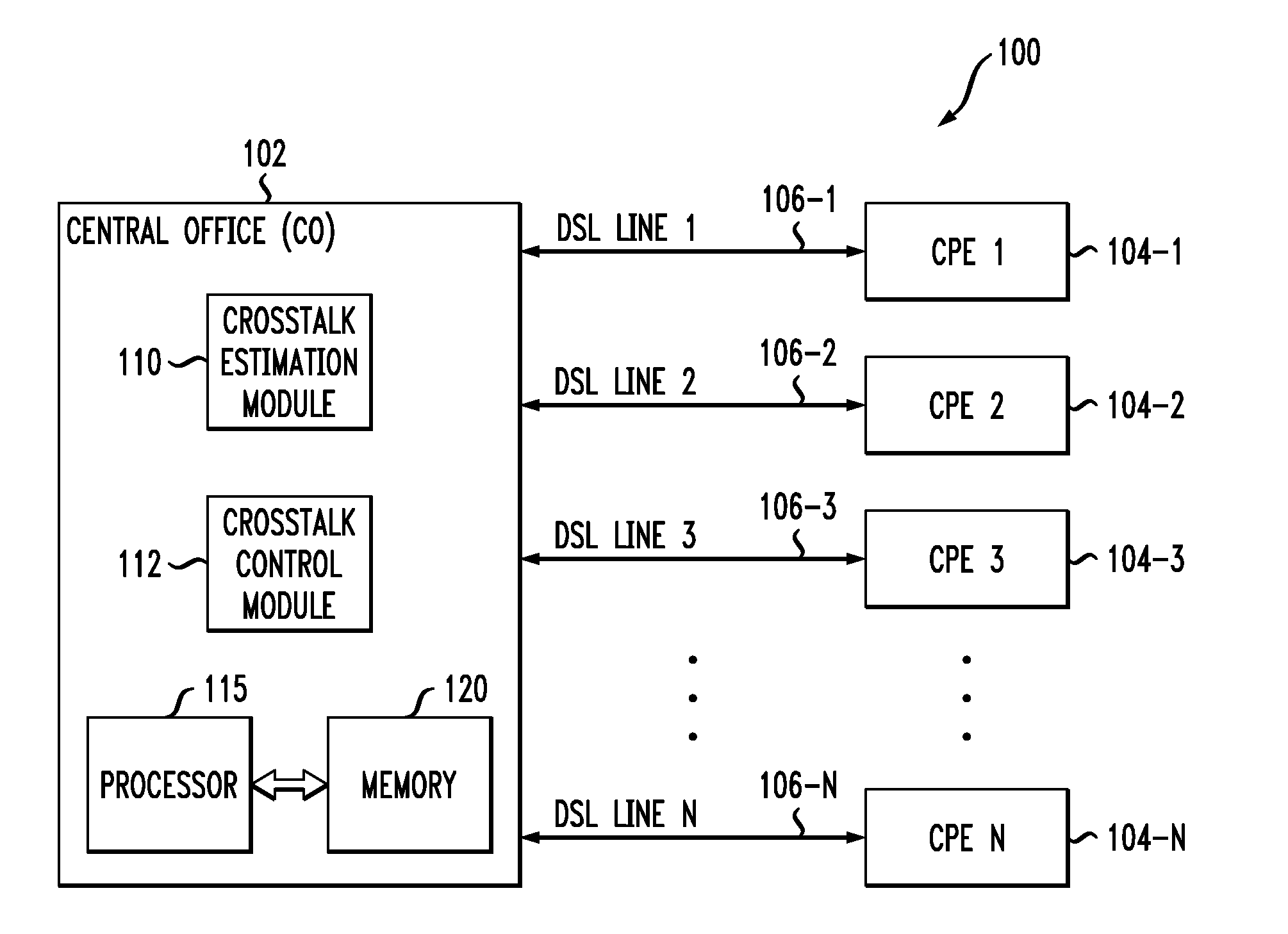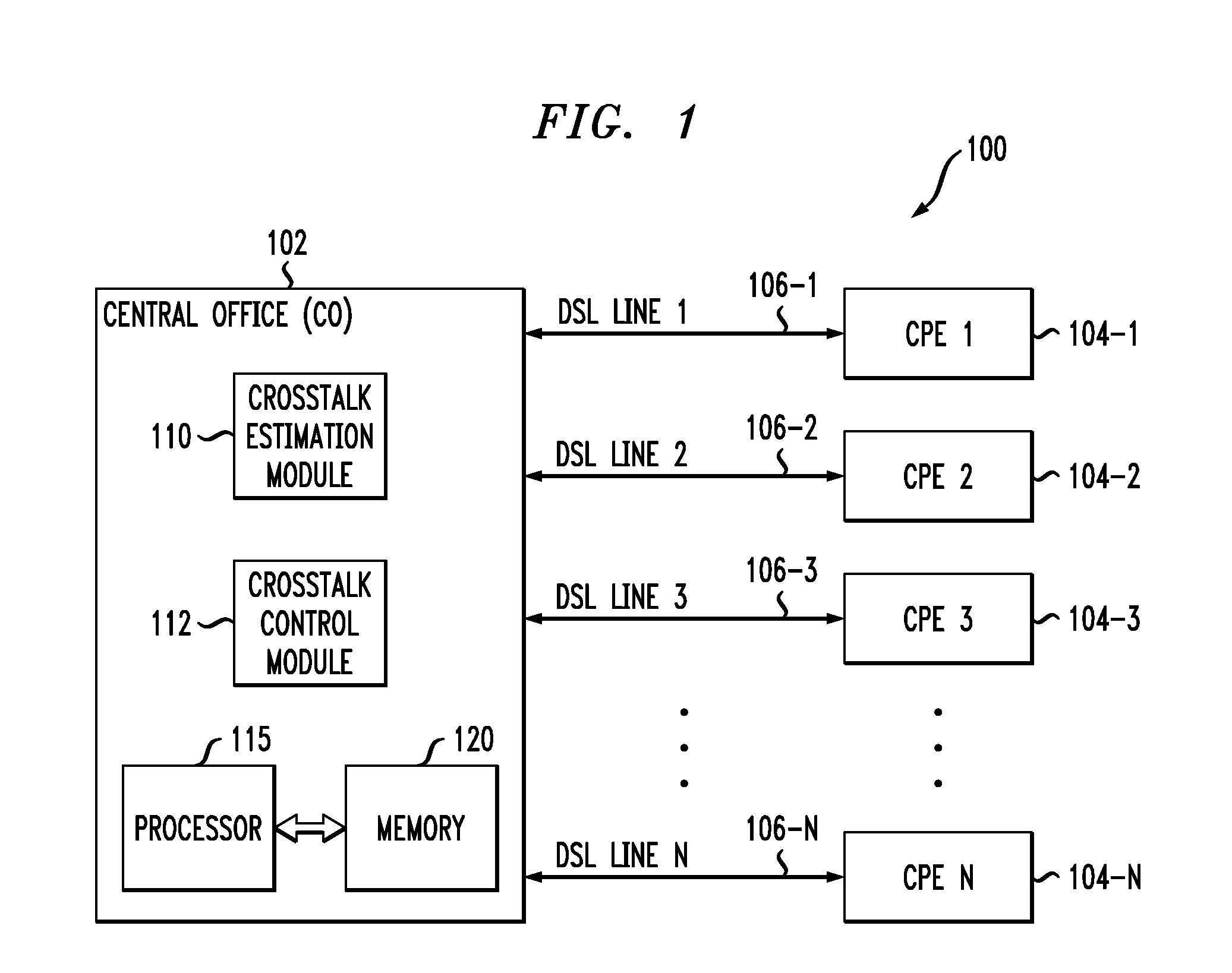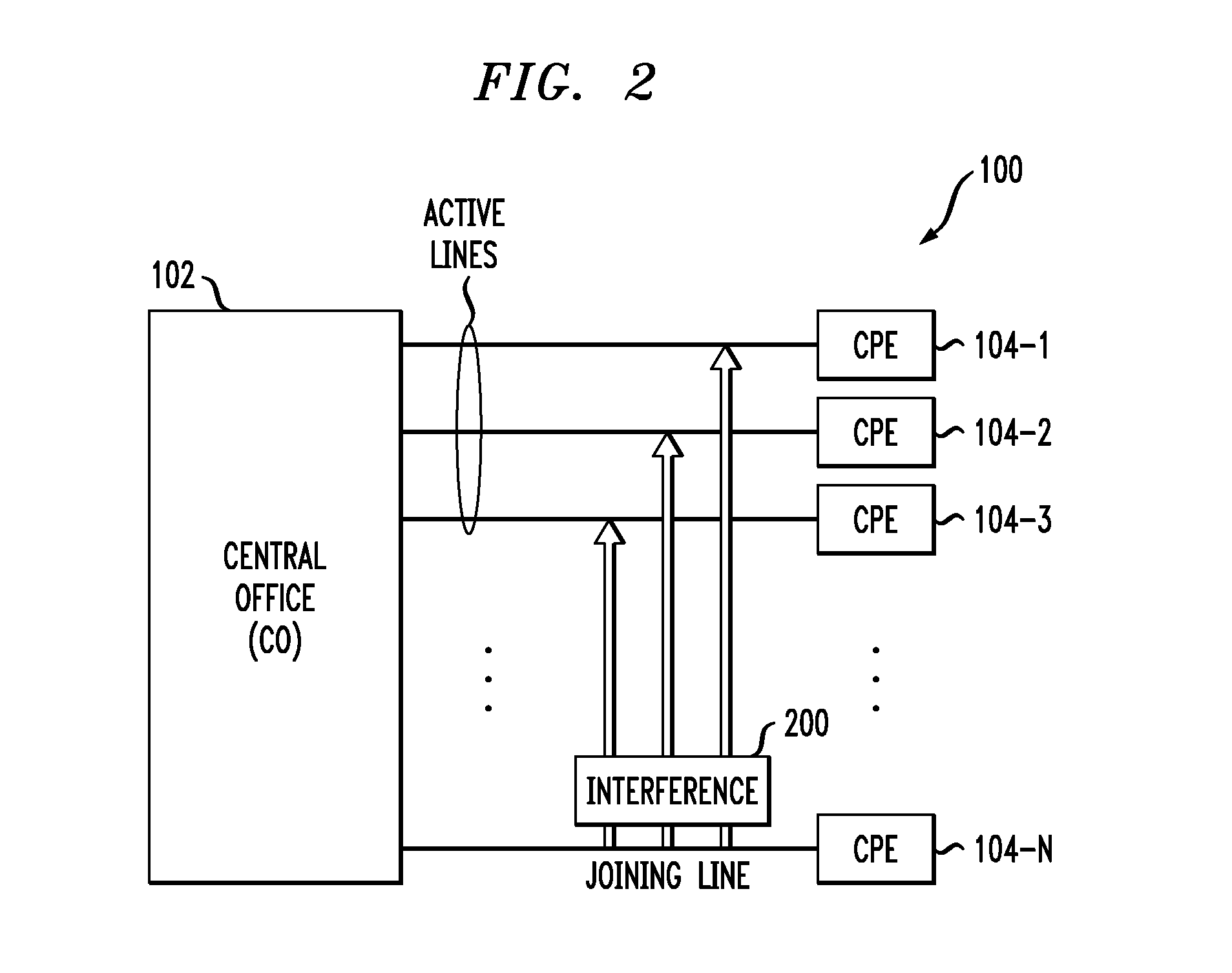Crosstalk control using delayed post-compensation in a multi-channel communication system
a multi-channel communication system and post-compensation technology, applied in the field of multi-channel communication systems, can solve the problems of affecting the throughput affecting the performance of the system, and affecting the ability of the system to cope with crosstalk, so as to achieve the effect of reducing the adverse impact of the joining line and achieving quick and efficient manner
- Summary
- Abstract
- Description
- Claims
- Application Information
AI Technical Summary
Benefits of technology
Problems solved by technology
Method used
Image
Examples
Embodiment Construction
[0017]The present invention will be illustrated herein in conjunction with exemplary communication systems and associated techniques for post-compensation or other types of crosstalk control in such systems. The crosstalk control may be applied in conjunction with joining subscriber lines or other communication channels to a group of active channels in such systems, tracking changes in crosstalk coefficients over time, or in other line management applications. It should be understood, however, that the invention is not limited to use with the particular types of communication systems and crosstalk control applications disclosed. The invention can be implemented in a wide variety of other communication systems, and in numerous alternative crosstalk control applications. For example, although illustrated in the context of DSL systems based on DMT modulation, the disclosed techniques can be adapted in a straightforward manner to a variety of other types of wired or wireless communicati...
PUM
 Login to View More
Login to View More Abstract
Description
Claims
Application Information
 Login to View More
Login to View More - R&D
- Intellectual Property
- Life Sciences
- Materials
- Tech Scout
- Unparalleled Data Quality
- Higher Quality Content
- 60% Fewer Hallucinations
Browse by: Latest US Patents, China's latest patents, Technical Efficacy Thesaurus, Application Domain, Technology Topic, Popular Technical Reports.
© 2025 PatSnap. All rights reserved.Legal|Privacy policy|Modern Slavery Act Transparency Statement|Sitemap|About US| Contact US: help@patsnap.com



